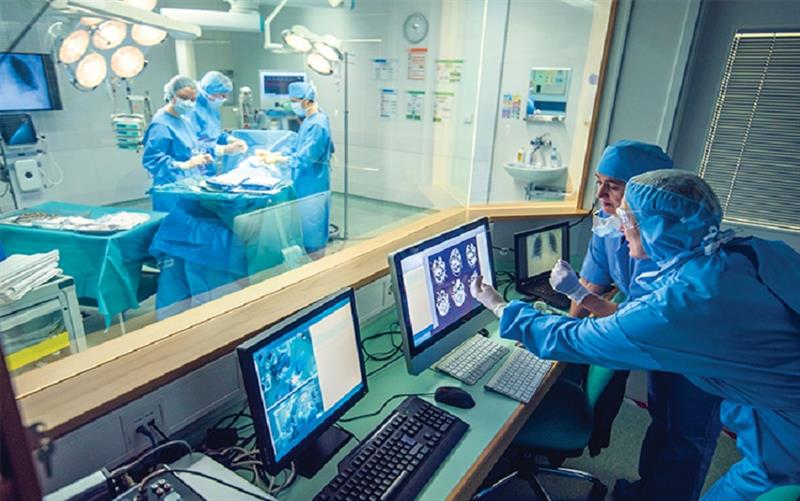
In the realm of healthcare, efficient communication is not just a convenience but a necessity. Lives depend on the swift exchange of accurate information between healthcare providers, medical devices, and systems. Yet, the landscape of medical software has historically been fragmented, with disparate systems unable to seamlessly communicate with one another. This lack of interoperability has long been a pain point, leading to inefficiencies, errors, and compromised patient care.
Seamless communication through medical software interoperability is not just a lofty ideal but an achievable goal with profound implications for healthcare delivery. By overcoming the technical, regulatory, and cultural barriers to interoperability, the healthcare industry can unlock the full potential of data-driven care, improve patient outcomes, and enhance the overall healthcare experience. As we continue to embrace innovation and collaboration, the vision of seamless communication in healthcare is within reach, promising a future where information flows freely, efficiently, and securely to support the health and well-being of all.
Understanding Interoperability
Interoperability in healthcare refers to the ability of different software systems and devices to communicate, exchange data, and use the information that has been exchanged. It involves both technical compatibility and semantic interoperability, ensuring that data exchanged between systems is not only understandable but also usable. Achieving interoperability is crucial for various aspects of healthcare delivery, including clinical decision-making, care coordination, and patient engagement.
Challenges in Achieving Interoperability
Historically, healthcare has been plagued by siloed systems, proprietary formats, and a lack of standardized protocols, hindering seamless communication between different stakeholders. Some of the key challenges in achieving interoperability include:
1. Fragmented Systems:
Healthcare organizations often use a variety of software systems for different purposes, such as electronic health records (EHRs), laboratory information systems, and billing platforms. These systems may be developed by different vendors and may not easily integrate with one another.
2. Data Standards:
Without standardized data formats and vocabularies, exchanging information between systems becomes cumbersome. Even when data can be transferred, differences in terminology and coding systems can lead to misinterpretation and errors.
3. Privacy and Security Concerns:
Healthcare data is highly sensitive, and ensuring patient privacy and data security is paramount. Interoperability efforts must navigate complex regulatory requirements such as HIPAA while enabling the secure exchange of information.
4. Legacy Infrastructure:
Many healthcare organizations still rely on legacy systems that were not designed with interoperability in mind. Updating or replacing these systems can be costly and time-consuming.
The Importance of Seamless Communication
Seamless communication through medical software interoperability has far-reaching implications for healthcare delivery:
1. Improved Patient Care:
Interoperability enables healthcare providers to access comprehensive patient information in real-time, facilitating more informed clinical decision-making and personalized care plans.
2. Efficiency and Cost Savings:
Streamlining communication between systems reduces administrative burden, eliminates redundant tasks, and improves operational efficiency, ultimately leading to cost savings for healthcare organizations.
3. Empowering Patients:
Interoperability empowers patients to take a more active role in their healthcare by allowing them to access their medical records, communicate with their providers, and participate in shared decision-making.
4. Patient Safety and Quality of Care:
Quick and accurate communication between healthcare providers ensures that crucial information about a patient's condition, treatment plan, and medical history is readily available. This facilitates timely interventions, reduces medical errors, and ultimately enhances patient safety and the quality of care delivered.
5. Care Coordination:
Healthcare is often delivered by interdisciplinary teams comprising physicians, nurses, specialists, therapists, and other professionals. Seamless communication enables these diverse stakeholders to collaborate seamlessly, share insights, coordinate care plans, and ensure that patients receive comprehensive and integrated care across different settings and providers.
6. Efficiency and Workflow Optimization:
Inefficient communication processes can lead to bottlenecks, delays, and administrative burdens, detracting from the time and attention healthcare providers can devote to patient care. Seamless communication streamlines workflows, reduces redundant tasks, and frees up resources, allowing healthcare organizations to operate more efficiently and focus on delivering value to patients.
7. Patient Experience:
Clear and transparent communication fosters trust and confidence between patients and their healthcare providers. When patients feel informed, involved, and listened to, they are more likely to actively participate in their care, adhere to treatment plans, and experience greater satisfaction with their healthcare experience.
8. Data-Driven Decision Making:
In today's digital healthcare landscape, vast amounts of data are generated and stored across various systems and devices. Seamless communication enables the aggregation, analysis, and interpretation of this data, empowering healthcare providers to make evidence-based decisions, identify trends, and personalize treatment strategies tailored to each patient's unique needs and preferences.
9. Continuity of Care:
Patients often receive care from multiple providers across different healthcare settings, such as hospitals, clinics, and long-term care facilities. Seamless communication ensures that relevant patient information is accessible and up-to-date regardless of where care is delivered, promoting continuity of care and preventing gaps or duplications in treatment.
10. Emergency Response and Disaster Management:
During emergencies, such as natural disasters or public health crises, rapid and effective communication is critical for coordinating emergency response efforts, mobilizing resources, and ensuring the safety and well-being of affected individuals. Seamless communication systems enable healthcare organizations and emergency responders to communicate seamlessly and respond promptly to emerging threats and crises.